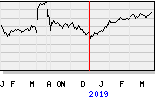
Amsterdam, the Netherlands – Royal Philips (NYSE: PHG, AEX: PHIA), a global leader in health technology, has for the sixth consecutive year been placed on the CDP Climate Change A List [1], once again highlighting Philips’ leadership in corporate climate action. CDP is a not-for-profit organization that runs a global disclosure system for investors, companies, cities, states and regions to help manage their environmental impact. The organization assesses a company’s environmental impact disclosure data against a scoring methodology that rates them on a scale of A to D, with A being the highest possible achievement. Based on its 2018 disclosure to CDP, Philips has been recognized for its actions during the last reporting year to reduce emissions, mitigate climate risks and develop the low-carbon economy.
“At Philips we innovate to deliver affordable, outcome-focused health technology solutions so that everyone on the planet can lead a healthy life,” said Frans van Houten, CEO of Royal Philips. “Yet the reality is that without a healthy planet, there are no truly healthy people. That’s why we are fully committed to doing everything we can to help meet the targets set out in the Paris Agreement. We also see reducing our CO2 emissions as an important prerequisite for sustainable growth, enabling us to be ahead of the curve in offering our customers green products and solutions, which already account for 60% of Philips’ revenue [2].”
To achieve the combined goal of sustainability and growth, Philips has adopted a strategy of decoupling economic growth from greenhouse gas emissions, through initiatives such as renewable electricity purchasing, materials reduction, equipment recycling/repurposing, reduced use of air transport for staff/freight, and EcoDesign, all of which have significantly reduced the company’s CO2 emissions over the last five years. Philips’ future emission reduction targets for the period 2020 – 2040 have been approved by the Science Based Targets initiative (SBTi) as being in line with the level of decarbonization required to keep global temperature increase below 2°C compared to pre-industrial temperatures, as described in the Fifth Assessment Report of the Intergovernmental Panel on Climate Change (IPCC) [3], and set out in the Paris Agreement on climate change.
CDP’s scoring methodology assesses companies on the comprehensiveness of their disclosure, their awareness and management of environmental risks, and their demonstration of best practices associated with environmental leadership, such as setting ambitious and meaningful targets.
“Congratulations to all companies that made it onto CDP’s A List this year,” said Paul Simpson, CEO of CDP. “As the severity of environmental risks to business becomes ever more apparent, these are the companies that are positioning themselves to provide solutions, seize new market opportunities and thrive in the transition to a sustainable economy. We need to urgently scale up environmental action at all levels in order to meet the goals of the Paris Agreement and the Sustainable Development Goals. It’s clear that the business world is an essential player in this transition and the A List companies are set to make a substantial contribution to those goals.”
Information on Philips’ sustainability strategy and its ‘Healthy people, sustainable planet’ program can be found here.
[1] The Climate Change A List is published by CDP each year, alongside similar lists for leadership on protecting forests and water security. The full list of companies that made this year’s CDP Climate Change A List are available, along with all other public company scores, at https://www.cdp.net/en/scores. The full methodology and criteria for the Climate Change A List are available on CDP’s website at https://www.cdp.net/en/guidance/guidance-for-companies under ‘CDP scoring methodologies 2018’. The 2018 CDP A List includes the CDP Supplier A List, which in previous years was released separately.
[2] Green Revenues are revenues generated through products and solutions that offer a significant environmental improvement in one or more Green Focal Areas: Energy efficiency, Packaging, Hazardous substances, Weight, Circularity and Lifetime reliability. For healthcare equipment, remote serviceability is another Green Focal Area. The lifecycle approach is used to determine a product’s overall environmental improvement. It calculates the environmental impact of a product over its total life cycle (raw materials, manufacturing, product use and disposal).
[3] IPCC, 2014: Climate Change 2014: Synthesis Report. Contribution of Working Groups I, II and III to the Fifth Assessment Report of the Intergovernmental Panel on Climate Change [Core Writing Team, R.K. Pachauri and L.A. Meyer (eds.)]. IPCC, Geneva, Switzerland, 151 pp.
